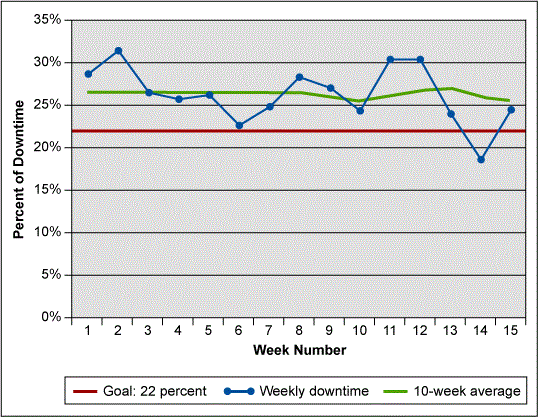
Lean Six Sigma is widely used in production, but it is just now breaking the surface in maintenance functions. Driving change in maintenance operations is a difficult task. Most maintenance personnel are taught on the job or learn their own techniques during the course of several years. Their experience in breakdown situations, which require them to make quick repairs to get equipment back up and running, leads them to make changes without fully scoping the problem or using data to make decisions.
This creates the challenge: How does a company implement a measurement system using data to identify root causes, prioritize workloads and drive improvements in a maintenance operation?
Although most medium to large companies have a computerized maintenance management software (CMMS) system, many do not take the time to utilize the information for maintenance improvement. The information is merely used as an accounting tool for maintenance charges. Most CMMS systems have a recording tool capable of tracking downtime information with a reason code; however, this field is rarely used. To begin to solve maintenance issues, the leader of the organization must enforce proper use of the CMMS system. The data will help:
- Identify the largest opportunities within the organization
- Develop the mean time between failures for all critical equipment
- Identify the root causes of breakdown occurrences
Proper use of maintenance metrics within the CMMS system is essential to the success of any maintenance department and should include the following metrics:
- Downtime metrics on all critical equipment (Downtime is defined as anytime equipment is scheduled for production yet not producing product.)
- Reason for each downtime event
- Overtime by trade
- Project status on all in-process and future projects
- Work order backlog status
- Percent scheduled work to total work orders
- Critical spares inventory and turns information
In companies where a CMMS system does not exist, an effective system that uses paper-based data collection techniques is an acceptable alternative. Start with a general ledger at each critical piece of equipment, ensuring that the ledger is connected to a workstation at the equipment. Maintenance employees should record work performed at the machine using data metrics such as:
- Downtime event date, start and end time, equipment number or name
- Reason for downtime
- Name of maintenance technician
- Summary of repair
- Parts used on repair
- Whether the event was scheduled or unscheduled
Once per week, compile the information from each critical machine to generate a summary of the maintenance performance. The report should include a Pareto chart of total downtime by each piece of critical equipment, downtime reasons for each piece of equipment, mean time between failures calculated for each piece of critical equipment and a downtime trend chart for each critical operation, as illustrated in the figure below.

Implement a weekly summary maintenance meeting for the site with the maintenance personnel that perform work on the equipment, maintenance planners and supervisors. During the meeting, maintenance employees in charge of designated areas should present the data and reports for their areas. The combined data enables the maintenance team to successfully identify areas of opportunity and plan for future improvements.
When used correctly, Lean Six Sigma measurement tools are effective in identifying improvement opportunities for maintenance organizations.